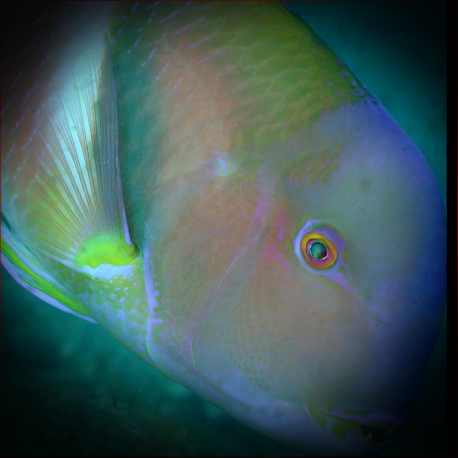More info
Datasheet
| Minimum Tank Size | 1000 litres / 264.17 US gallons |
| Maximum Size | 40.0cm / 15.75inches |
| Reef Compatible | Not reef safe |
| Temperament | Might be aggressive towards other species |
| Temperature | 22.2°C / 71.96°F - 25.6°C / 78.08°F |
| Specific Gravity | 1.020-1.025 |
| Carbonate Hardness | 8-12 |
| pH | 8.1-8.4 |
General Description
The Azurio tuskfish, scientifically known as Choerodon azurio, belongs to the Labridae family. These fish are part of the Wrasses category and are native to regions such as Australia, Japan, Indonesia, New Zealand, and the Central/West Pacific. They can grow up to 40.0cm in size and require a minimum tank size of 1000 liters when fully grown.
Aquarium Suitability
Considered suitable with care, the Azurio tuskfish demands a very large aquarium, making it challenging to keep in a home aquarium once it reaches its full size. These fish have an average hardiness level, and it is recommended to provide them with hiding places like live rocks and ensure that rocks are securely positioned on the substrate to prevent toppling over.
Care and Hardiness
The Azurio tuskfish are known for their active and intelligent nature, requiring frequent feeding with various kinds of seafood, frozen, and dried foods multiple times a day. They can exhibit aggression, especially towards similar fish species or if they lack adequate space in the aquarium. Additionally, these fish may rearrange rocks and sand in their environment.
Reef Suitability
These tuskfish are not reef-safe and are more likely to eat invertebrates such as crustaceans, snails, starfish, and sea urchins. However, the species Choerodon fasciatus can be cautiously kept in a reef aquarium as they are less prone to consuming invertebrates.
Aquarium Setup
Azurio tuskfish thrive better on their own in an aquarium with ample swimming space. It is crucial to provide them with a tank suited to their size and active swimming behavior. Monitoring the electrical installations around the tank is vital, as large individuals have been known to spit water upwards.
Behaviour
Initially, these fish may be shy upon introduction to a new aquarium but can become more aggressive over time. They are known to move loose corals and stones in their search for food, emphasizing the need for secure rock placement and ample hiding spots to ensure their comfort.
Feeding and Diet
Their recommended diet includes larger crustaceans, other invertebrates, and small crustaceans like krill, mysis, and artemia. Ensuring that they are well-fed multiple times a day is essential, especially when they are newly introduced to the aquarium environment.
Dimorphism
Details regarding dimorphism and captive reproduction are not covered in the available information.
Habitat and Distribution
The Azurio tuskfish are found in various regions across Australia, Japan, Indonesia, New Zealand, and the Central/West Pacific. Their habitat includes a diverse range of marine environments where they can exhibit their natural behaviors.

